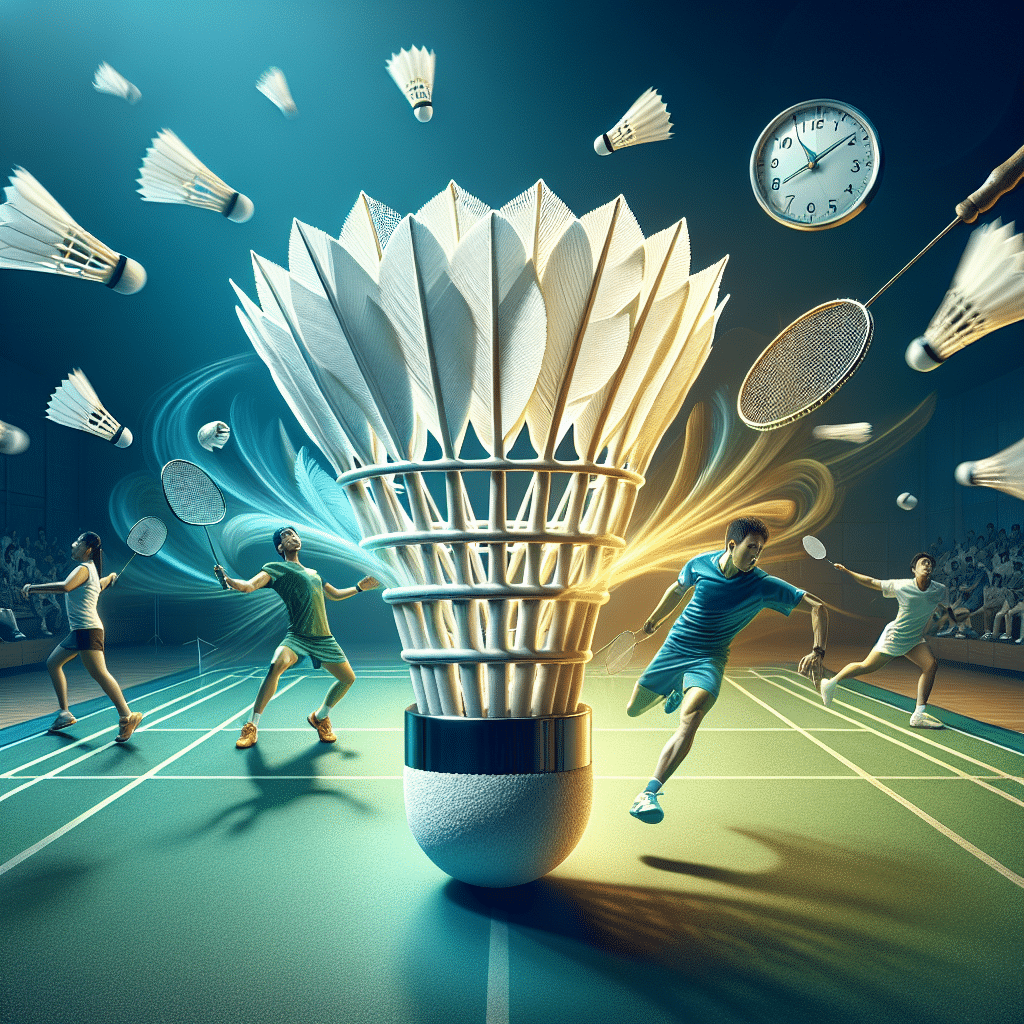How to Manage Time Effectively as a Shuttle Flash Badminton Player
As a shuttle flash badminton player, mastering time management is as crucial as perfecting your smash. Whether you’re juggling training sessions, tournaments, or personal commitments, managing your time effectively can be the difference between success and burnout. In this blog post, we’ll explore strategies to help you optimize your schedule and maintain a balance that supports both your athletic and personal goals.
Table of Contents
1. Introduction
2. Setting Clear Goals 🎯
3. Prioritizing Your Time ⏰
4. Creating a Structured Schedule 📅
5. Balancing Training and Recovery 🏋️♂️🛌
6. Leveraging Technology for Time Management 📱
7. Conclusion
8. FAQs
Setting Clear Goals 🎯
Before diving into time management specifics, it’s essential to set clear and attainable goals. As a shuttle flash badminton player, your objectives might range from improving specific skills to winning a local championship. Clearly defined goals provide a roadmap for your daily, weekly, and monthly schedules, ensuring every minute you invest in training is purposeful.

Ask yourself: What do I want to achieve this season? Is it to enhance my footwork, work on my backhand, or perhaps to gain more tournament experience? Once you’ve identified these goals, break them down into smaller, actionable steps. This method not only makes your goals less daunting but also helps track progress more effectively.
Prioritizing Your Time ⏰
With goals in mind, the next step is prioritizing your time. The Eisenhower Box (also known as the Urgent-Important Matrix) can be a handy tool. Categorize tasks based on their urgency and importance, helping you focus on what truly matters.
For instance, if you have an upcoming tournament, prioritizing practice sessions over leisure activities becomes crucial. However, remember to strike a balance. Prioritization doesn’t mean neglecting personal time or rest; it means aligning your daily activities with your overarching badminton objectives.

Creating a Structured Schedule 📅
A structured schedule is the backbone of effective time management. Consider using a planner or digital calendar to map out your weekly commitments. Start by blocking out training sessions, tournaments, and other badminton-related activities.
Next, allocate time for rest, meals, and personal commitments. Consistency is key. Try to maintain a routine that aligns with your natural energy levels. For instance, if you’re a morning person, schedule intense training sessions in the morning when you’re most alert and energetic.
Balancing Training and Recovery 🏋️♂️🛌
One of the biggest challenges for athletes is finding the right balance between training and recovery. Overworking can lead to burnout or injuries, while insufficient training can impact performance. Listen to your body and adjust your schedule accordingly.
Incorporate rest days and active recovery sessions into your routine. Activities like yoga, swimming, or even light jogging can help maintain fitness without putting additional strain on your body. Remember, recovery is just as important as training in your journey to becoming a successful shuttle flash badminton player.
Leveraging Technology for Time Management 📱
In today’s digital age, numerous apps and tools can aid in time management. Consider using apps like Google Calendar for scheduling, Trello for task management, and MyFitnessPal for tracking nutrition and workouts. These tools can help streamline your daily activities, ensuring you stay on track with your goals.
Additionally, using wearable technology like fitness trackers can provide insights into your physical activity, sleep patterns, and recovery. This data can be invaluable in tweaking your schedule for optimal performance and health.
Conclusion
Time management as a shuttle flash badminton player isn’t just about squeezing in more training hours; it’s about creating a balanced lifestyle that supports your athletic ambitions. By setting clear goals, prioritizing effectively, and leveraging technology, you can ensure every moment counts towards achieving your badminton dreams. Remember, the court is not just a place of competition but also of personal growth and fulfillment. 🏸
FAQs
Q: How many hours should I practice badminton daily?
A: It varies depending on your level and goals. However, 1-2 hours of focused practice daily, combined with rest and recovery, is a good starting point for most players.
Q: How can I prevent burnout as a badminton player?
A: Prioritize rest, maintain a balanced schedule, and listen to your body. Incorporating rest days and cross-training can help prevent burnout.
Q: What is active recovery?
A: Active recovery involves low-intensity exercises like walking, stretching, or yoga, which help promote blood flow and recovery without the strain of regular training.
Q: Are there specific apps you recommend for athletes?
A: Yes, apps like Google Calendar for scheduling, MyFitnessPal for nutrition, and Strava for tracking workouts can be very useful for athletes.
